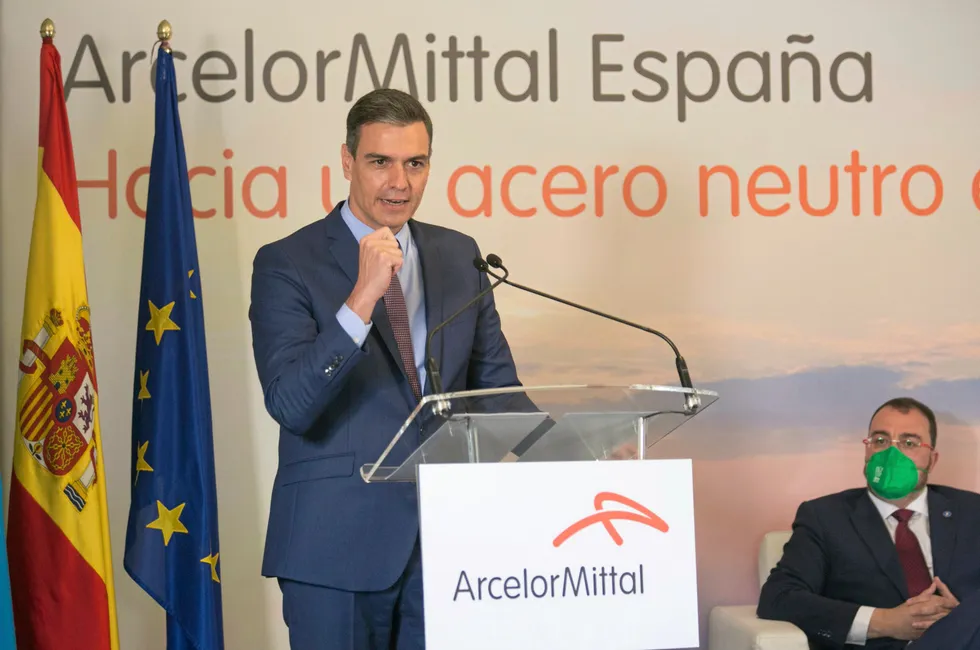Spanish government approves €450m grant to ArcelorMittal to help decarbonise steel plant with green hydrogen
While company takes taxpayer cash to reduce emissions in Europe, it is building new coal-fired furnaces in India

Spain’s Council of Ministers has finally approved a €450m ($492.4m) grant to steelmaker ArcelorMittal to replace its coal-burning facilities at its plant in Gijón, northern Spain, with equipment that can produce so-called “green steel”.
Hydrogen: hype, hope and the hard truths around its role in the energy transition
The two blast furnaces are set to be replaced by a 2.3 million-tonne direct-reduced iron (DRI) unit that can use green hydrogen to extract iron from ore, rather than coal, and a 1.1 million-tonne hybrid electric arc furnace that can melt iron and scrap steel using renewable energy.
According to the commission, the plant will initially use natural gas, rather than hydrogen, but “ultimately, the plant will be operated using renewable hydrogen with syngas [a mixture of hydrogen and carbon monoxide] produced from waste and metallurgical gases”.
Coincidentally, the Gijón steel mill had to be evacuated on 22 March after one of its blast furnaces caused a fire due to an “unexpected reaction” during a halt for maintenance.
The Luxembourg-based steel maker, which is 37%-owned by Indian billionaire Lakshmi Mittal, has already received $655m from Canadian authorities for a “hydrogen-ready” green steel plant in Ontario, and is due to take a further €55m from Germany for a demonstration green steel project there.
And according to the company’s 2021 annual review, ArcelorMittal has letters of intent from the governments of Belgium and Flanders to invest in a green steel project in the city of Ghent, while it also has “support” from the French government for similar plans in Dunkirk.
There is no guarantee that green hydrogen will be used at ArcelorMittal’s plants in Ontario or Gijón any time soon.
When beginning construction of the plant in Hamilton, Ontario, the company stated that the new furnace “will be constructed ‘hydrogen-ready’ so it can be transitioned to utilize green hydrogen as a clean energy input as and when a sufficient, cost-effective supply of green hydrogen becomes available”.
It could be many years before a “sufficient, cost-effective supply” is available, and the wording leaves the door open for ArcelorMittal to continue using natural gas at the site indefinitely.
Similarly, the company stated in 2021 that its Spanish facilities would only use iron made from green hydrogen if it was affordable to do so.
“Should green hydrogen not be available at affordable rates by the end of 2025, natural gas would be used to power the DRI furnace,” it said.,
Hydrogen is the only commercially available clean alternative that can carry out both the heating and oxygen-removal functions.
(Copyright)